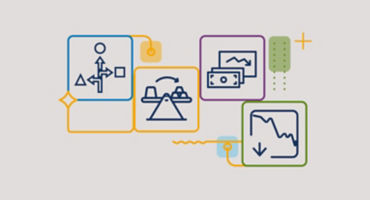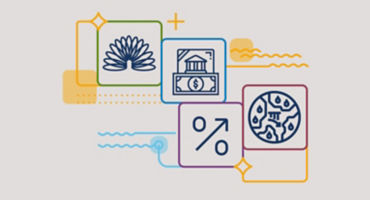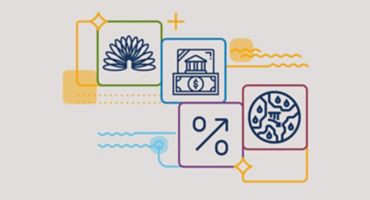- 固定收益投資組合經理
Skip to main content
- 基金中心
- 投資見解
- 關於我們
本刊所載見解反映作者於撰文時的觀點,其他團隊可能觀點各異,或會作出不同的投資決策。閣下投資的價值可能高於或低於初始投資時的水平。本刊所載第三方數據被視為可靠,惟概不保證其準確性。
僅提供英文版本
With rising inflation and interest rates dominating the financial headlines in recent weeks, I have been fielding a flurry of colleague and client questions about the likely future trajectory of US monetary policy. While I don't claim to have all the answers, especially with so many "known unknowns" as of this writing, here are my latest thoughts.
The annual US headline inflation rate, as measured by the Consumer Price Index (CPI), accelerated to 8.5% year-over-year in March 2022, its highest level since December 1981. With inflation that far above the US Federal Reserve's (Fed's) long-term target, I suspect the Fed will feel compelled to tighten monetary policy as swiftly as possible over the next couple of months and will likely not be as supportive of risk markets as many investors have come to expect.
To wit, in a widely anticipated policy move, the Fed on May 4 announced a 50-basis point (bp) increase in the fed funds rate, bringing its benchmark short-term interest rate from 0% – 0.50% to a target range of 0.75% – 1.00%. Meanwhile, the Fed is also intent on gradually reducing the size of its balance sheet, swollen by asset purchases made at the height of the COVID-19 pandemic, in the period ahead. A new era in US monetary policy is seemingly upon us.
What now, specifically with regard to rates and inflation? Many Fed watchers and policymakers alike have said they'd like to see the Fed achieve so-called "neutrality" over the next year, which would likely equate to a target range of around 2.5% – 3.5% for the fed funds rate by mid-2023. That would require several additional rate hikes between now and then, but of course much will depend on how the US inflation backdrop — still a source of considerable uncertainty — evolves over that time frame.
On that score, I also think there is a distinct possibility that we could emerge from this inflationary period that we are now in with a higher average inflation target than the Fed's current 2.0% threshold. As far as I can tell, that's not something that is being discussed much, if at all, by pundits and market participants (not yet anyway).
To no one's surprise given the state of inflation, recent Fed rhetoric has been much more hawkish than expected last year. The US rates market has come a long way to reflect this reality, but now the all-important question is: How much policy tightening can the Fed really deliver for the rest of 2022 and into 2023, without "overtightening" and potentially tipping the US economy toward recession? Unfortunately, it's not as easily answered as asked.
Despite many observers' hope that the Fed can reach a neutral policy rate over the next year or so, few investors or policymakers have much conviction as to what the terminal fed funds rate should be. Again, that's largely because of the inflation wild card: No one can be sure yet how high or how rapidly US inflation might climb before this cycle is over. What we do know is that inflation has broadened out from mainly COVID-impacted sectors last year to most areas of the US economy today. Accordingly, worker wages have risen as well, posing a real risk of a "wage-price spiral" that pushes longer-term inflation expectations even higher (Figure 1) amid ongoing global supply-chain disruptions from China's COVID lockdowns and the Russia/Ukraine war.
Bottom line: I think it's going to take at least two more quarters of reliable economic data to be able to calibrate with any degree of accuracy how much tighter US monetary policy will or can get from here. With that in mind, I'll be closely tracking a variety of US financial conditions going forward, particularly key economic indicators such as: the labor market (wages and unemployment); existing home and new auto sales (both interest-rate-sensitive sectors); consumer sentiment and longer-term inflation expectations; and, of course, the realized inflation data itself. I will aim to address these topics in more detail in my next blog post.

參考網站連結
相關投資見解
焦點圖解:四大範疇蘊藏高收益機遇
我們認為市場將在2024年持續波動,可能會產生更大的特殊差異,並帶來更有利的入市良機,投資者或可從四大高收益信貸範疇中發掘機遇。

行政總裁年度寄語:關鍵時刻 不忘初心
行政總裁韓思澄(Jean Hynes)就當前的宏觀和市場環境提出了一些看法,包括需要挑戰固有假設,為持續的顛覆做好準備,並審視由此衍生的投資機會和風險。(僅提供英文版)

三大重點 提升2024年組合潛力
隨著嶄新的投資世代不斷發展,投資者應如何釐清脈絡? 多元資產策略師Nick Samouilhan 認為, 2024年將有三個值得關注的重點:收益率上升、選股的重要性,以及如何就結構轉變作好部署。

投資債券的理據:
何以現金只是權宜之計
投資債券長遠而言比持有現金吸引?兩位專家環球投資策略師Nanette Abuhoff Jacobson及投資策略分析師Patrick Wattiau就以上議題分享見解。

亞洲科技:
為環球產業構建所需技術
環球行業分析師Yash Patodia就現時為科技業注入源源動力的兩大主題——生成式人工智能及混合實境,分享當中有何投資機遇,並闡述亞洲何以是創新的基石,以及其認為環球未來增長動力何在。(僅提供英文版本)


參考網站連結
相關投資見解
重要披露
在未有威靈頓投資管理明確書面批准的情況下,概不可複製或轉載本刊全部或任何部分內容。本文件僅供參考之用,並非任何人士要約或邀請認購威靈頓投資管理(盧森堡)SICAV基金III系列的股份。本文件所載資料不應被視為投資建議,亦非買賣任何股份之推介。基金投資不一定適合所有投資者。所載見解反映作者於撰文時的觀點,可予更改而不作另行通知。投資者於作出投資決定前,務請細閱基金及子基金的產品資料概要、基金招股章程及香港說明文件,以了解詳情(包括風險因素),其他有關文件包括年度及半年度財務報告。
由威靈頓管理香港有限公司刊發。投資涉及風險。過去業績並不代表將來表現。本文件未經香港證券及期貨事務監察委員會審閱。